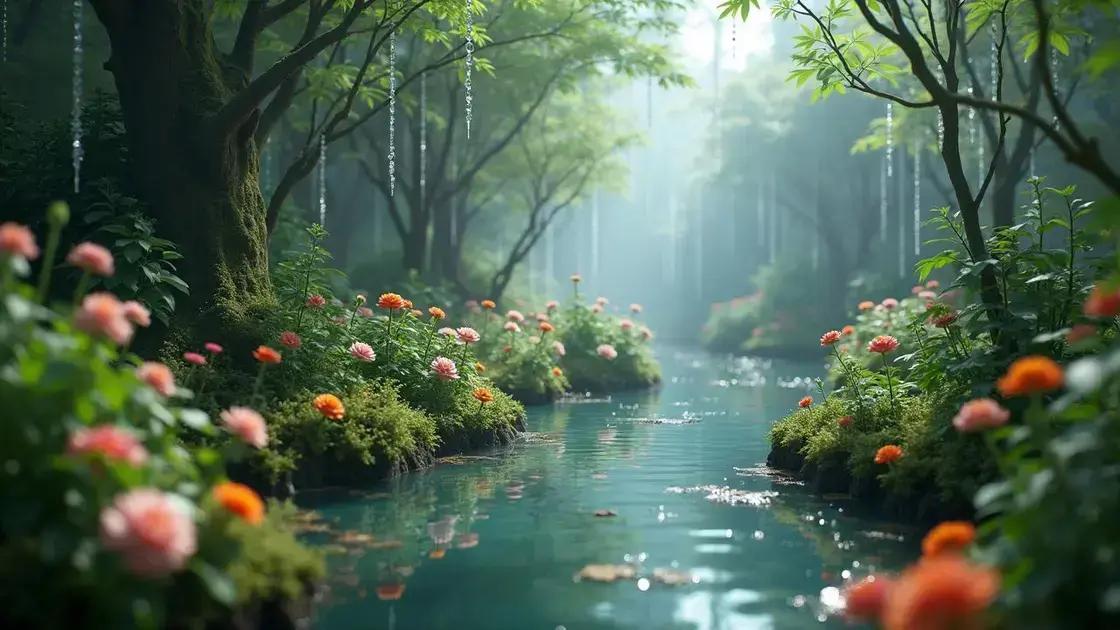How to Take Care of a String of Pearls Plant: 5 Essential Tips
How to take care of a string of pearls plant can be a rewarding journey for both novice and seasoned plant lovers. With unique appearances, these trailing succulents can bring life to any space. You might be wondering how to ensure they thrive and remain vibrant in your care. In this article, we will explore essential tips to foster healthy growth and address common issues that arise.
Table of Contents
ToggleUnderstanding the watering needs of your string of pearls
Understanding the watering needs of your string of pearls is crucial for keeping this unique plant healthy and vibrant. These succulent plants are native to arid regions, which means they have specific requirements when it comes to water. Overwatering is one of the most common mistakes among beginners, so knowing how much water to provide is essential.
- Watering frequency: Typically, your string of pearls should be watered every 2-3 weeks, depending on the environment. In warmer months, they might require more frequent watering.
- Soil moisture check: Stick your finger about an inch into the soil. If it feels dry, it’s time to water again. This ensures you’re not watering too early.
- Watering method: When you do water, ensure you do so thoroughly. Allow the water to drain out of the bottom of the pot, which helps prevent root rot.
Signs of overwatering
Being attentive to your plant’s signals is key. Below are some common signs that you may be overwatering:
- Yellowing leaves
- Soft or mushy pearls
- Leaves dropping off
Establishing a watering routine
Creating a schedule can help manage your string of pearls’ watering needs. Consider these tips:
- Check moisture levels Weekly
- Adjust frequency based on environment
- Use a well-draining potting mix for succulents
For more detailed techniques on growing healthy indoor plants, you might find value in exploring indoor gardening techniques. This can guide you to select the appropriate soil and ensure optimal watering practices.
Conclusion
Understanding the watering needs of your string of pearls is a mix of observation, experimentation, and adjustment. With proper care, this unique plant can thrive and add beauty to your indoor garden.
Light requirements for optimal growth of string of pearls

Light requirements for optimal growth of string of pearls significantly affect the health and appearance of your plant. These succulents thrive in bright, indirect light and can adapt to varying light conditions; however, providing the right lighting will lead to lush growth and vibrant color.
Ideal lighting conditions
Understanding the best light conditions is essential for your string of pearls. Here’s what to consider:
- **Bright, indirect light**: This is the optimal condition for growth. Placing your plant near a window covered with sheer curtains works perfectly.
- **Avoid direct sunlight**: While string of pearls appreciates bright light, too much direct sun can scorch the leaves, leading to brown tips. Keep them out of the harsh afternoon rays.
- **Artificial light**: If you don’t have enough natural light, consider using grow lights to supplement. LED grow lights are a good option as they provide the right spectrum for growth.
Signs of inadequate lighting
If your string of pearls is not receiving sufficient light, you might notice:
- Stretched and leggy growth
- Fading color
- Dropping leaves
Adjusting light conditions
It’s important to adjust the light according to the season and growth stage. Here are some steps:
- **Monitor sunlight**: As seasons change, keep an eye on how much light your plant gets.
- **Rotate your pot**: Every few weeks to ensure even light exposure.
- **Gradually introduce new light**: If moving your plant to a brighter location, do it gradually to prevent shock.
For further insights into creating the ideal environment for your plants, consider exploring indoor gardening techniques. Adapting your approach based on lighting can result in a thriving string of pearls, rich in vibrant colors and healthy growth.
Common problems and solutions for string of pearls plants
Common problems and solutions for string of pearls plants can greatly impact the longevity and beauty of these unique succulents. Many enthusiasts encounter various issues while caring for these plants, but understanding the challenges and knowing how to address them can keep your string of pearls thriving.
Identifying common problems
Some of the most frequently observed issues with string of pearls plants include:
- **Overwatering**: This is often indicated by yellowing leaves and mushy stems.
- **Insufficient light**: If the plant becomes leggy or pale, it may not be receiving enough sunlight.
- **Pests**: Mealybugs and spider mites are common threats that can harm your plant.
Solutions for overwatering
To rectify overwatering issues, consider the following steps:
- Allow the soil to dry out completely between waterings.
- Repot in fresh, well-draining soil if root rot is suspected.
- Reduce the frequency of watering during less active growing seasons.
Fixing inadequate light conditions
To resolve lighting issues, try these adjustments:
- Move the plant to a brighter location, ensuring it receives bright, indirect light.
- If using artificial light, ensure the grow light is positioned properly to provide sufficient coverage.
- Regularly check for leggy growth, and reposition the plant as needed.
Dealing with pest infestations
Combat pests effectively by:
- Inspecting the plant regularly for early signs of infestation.
- Using insecticidal soap or neem oil to treat affected areas.
- Quarantining new plants before introducing them to avoid cross-contamination.
To learn more about creating a healthy environment for your plants, consider exploring indoor gardening techniques. By being proactive and attentive, you can prevent common problems and sustain the vitality of your string of pearls plants.
In conclusion
Caring for a string of pearls plant requires understanding its unique needs, including proper watering, light conditions, and common issues that may arise. By giving your plant the right attention and care, you can enjoy its stunning appearance and resilience over time. Remember to regularly assess your plant’s environment and adjust care strategies as necessary. For additional tips on enhancing your indoor garden, keep exploring the best practices in succulent care.

